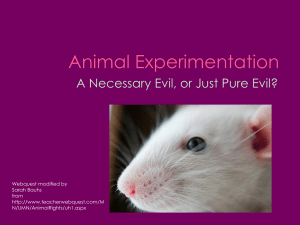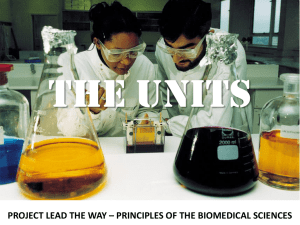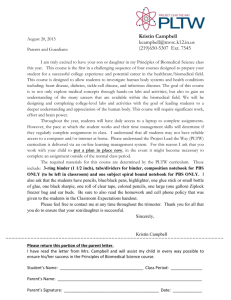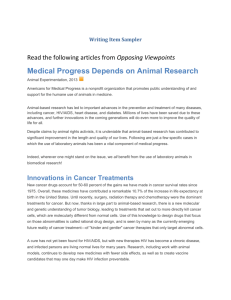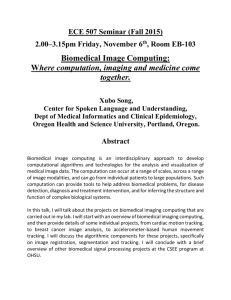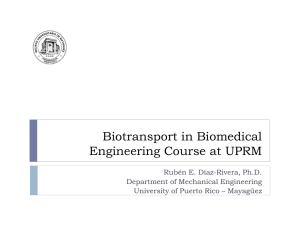File
advertisement
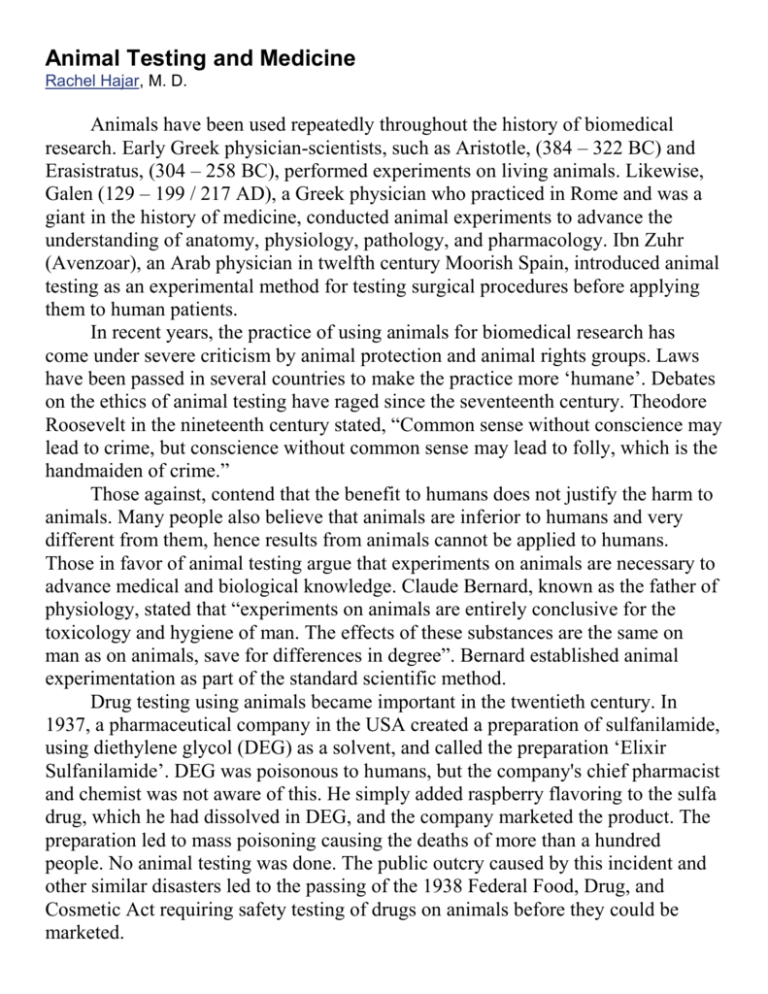
Animal Testing and Medicine Rachel Hajar, M. D. Animals have been used repeatedly throughout the history of biomedical research. Early Greek physician-scientists, such as Aristotle, (384 – 322 BC) and Erasistratus, (304 – 258 BC), performed experiments on living animals. Likewise, Galen (129 – 199 / 217 AD), a Greek physician who practiced in Rome and was a giant in the history of medicine, conducted animal experiments to advance the understanding of anatomy, physiology, pathology, and pharmacology. Ibn Zuhr (Avenzoar), an Arab physician in twelfth century Moorish Spain, introduced animal testing as an experimental method for testing surgical procedures before applying them to human patients. In recent years, the practice of using animals for biomedical research has come under severe criticism by animal protection and animal rights groups. Laws have been passed in several countries to make the practice more ‘humane’. Debates on the ethics of animal testing have raged since the seventeenth century. Theodore Roosevelt in the nineteenth century stated, “Common sense without conscience may lead to crime, but conscience without common sense may lead to folly, which is the handmaiden of crime.” Those against, contend that the benefit to humans does not justify the harm to animals. Many people also believe that animals are inferior to humans and very different from them, hence results from animals cannot be applied to humans. Those in favor of animal testing argue that experiments on animals are necessary to advance medical and biological knowledge. Claude Bernard, known as the father of physiology, stated that “experiments on animals are entirely conclusive for the toxicology and hygiene of man. The effects of these substances are the same on man as on animals, save for differences in degree”. Bernard established animal experimentation as part of the standard scientific method. Drug testing using animals became important in the twentieth century. In 1937, a pharmaceutical company in the USA created a preparation of sulfanilamide, using diethylene glycol (DEG) as a solvent, and called the preparation ‘Elixir Sulfanilamide’. DEG was poisonous to humans, but the company's chief pharmacist and chemist was not aware of this. He simply added raspberry flavoring to the sulfa drug, which he had dissolved in DEG, and the company marketed the product. The preparation led to mass poisoning causing the deaths of more than a hundred people. No animal testing was done. The public outcry caused by this incident and other similar disasters led to the passing of the 1938 Federal Food, Drug, and Cosmetic Act requiring safety testing of drugs on animals before they could be marketed. Another tragic drug fiasco occurred in the late 1950s and early 1960s with thalidomide. It was found to act as an effective tranquilizer and painkiller and was proclaimed a ‘wonder drug’ for insomnia, coughs, colds, and headaches. It was found to have an inhibitory effect on morning sickness, and hence, thousands of pregnant women took the drug to relieve their symptoms. Consequently, more than 10,000 children in 46 countries were born with malformations or missing limbs (phocomelia, from the Greek meaning ‘limb’). The drug was withdrawn in 1961 and 1968 after a long campaign. The above-mentioned incidents and others illustrate the harm to humans from the use of substances that have not been first tested on animals and underline the importance of animal experimentation to avert or prevent human tragedy. The practice of using animals in biomedical research has led to significant advances in the treatment of various diseases. Issues such as ‘cruelty’ to animals and the humane treatment of animals are valid concerns, and hence, the use of animals in experimentation is greatly regulated. This has led to the 3Rs campaign, which advocates the search (1) for the replacement of animals with non-living models; (2) reduction in the use of animals; and (3) refinement of animal use practices. However, total elimination of animal testing will significantly set back the development of essential medical devices, medicines, and treatment. By employing the 3Rs when continuing to use animals for scientific research, the scientific community can affirm its moral conscience as well as uphold its obligation to humanity to further the advancement of science for civilization and humanity.

